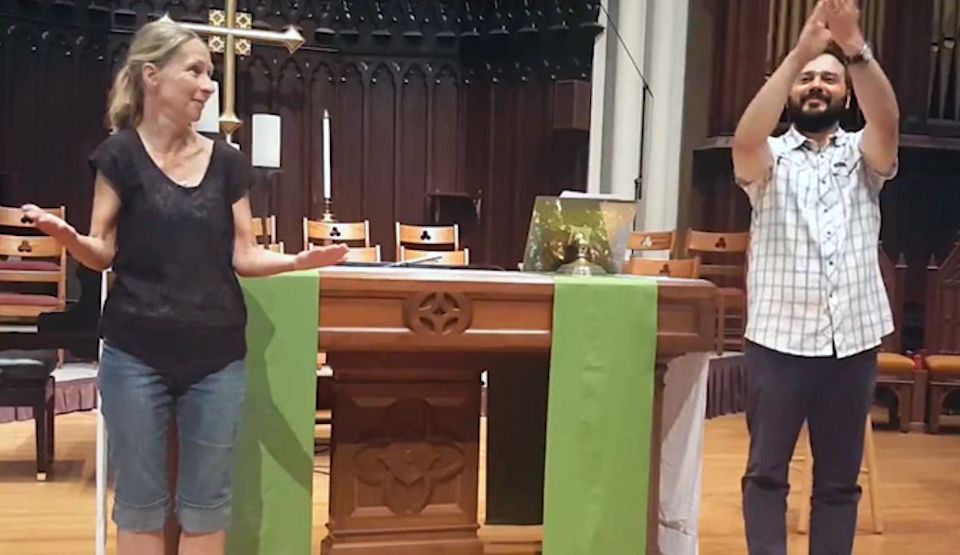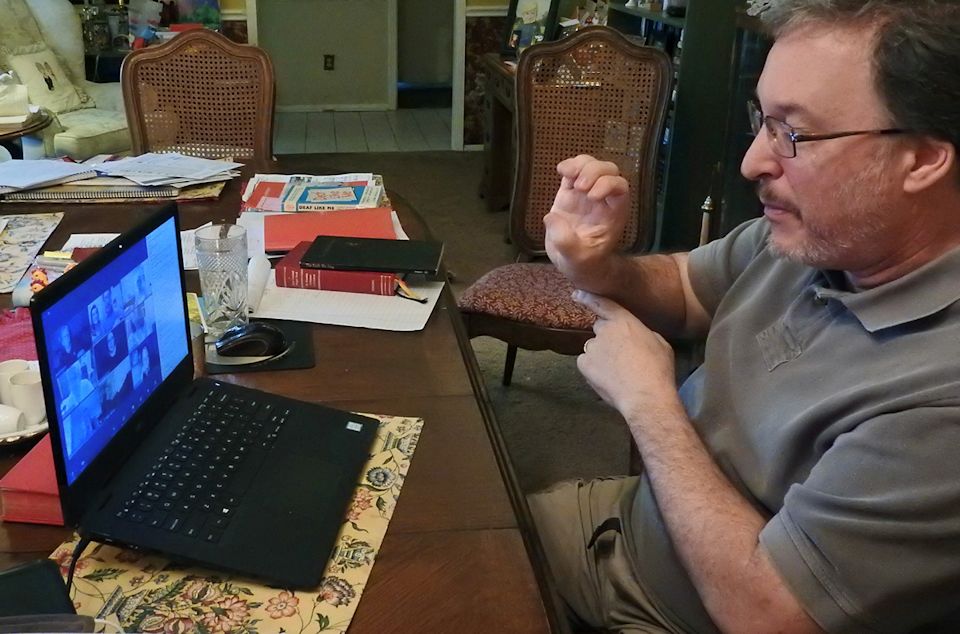Some accessibility issues are neglected. Here are ways to help people of all abilities become more active in your worship service.
TRICIA K. BROWN
ResourceUMC
Jesus calls everyone to come to him.
The sounds and visuals of worship are an avenue toward that. The music, the banner colors, the scripture readings, all are designed to stimulate the senses. Regrettably, people with hearing and vision problems are sometimes unintentionally excluded or neglected in worship and the church. They can also suffer just as much from simplistic or untested solutions as they can from omission.
While the challenges may seem daunting, there are simple ways to help people of all abilities worship as one, fulfilling Jesus’ call.
The most crucial step is getting to know the individuals who make up a congregation. As a pastor or leader, it’s your responsibility to take the initiative. Communicate with and listen to members who have special needs.
Avoid assumptions about needs or abilities. Ask them how you can make the church a more welcoming place and address their needs. Help without pitying. The better acquainted you are with the person, the better you’ll be in helping them become an active member.
Incorporate these practical steps in ministry and marketing messages to help your church better serve people of varying abilities.
For those who cannot hear
Hearing loss varies, often by fine degrees, that make a huge difference.
Some people may have been born deaf or have progressively lost hearing with age or as a result of an accident. Individuals may be mute and rely solely on sign language. Others may not know sign language, but they read lips. Still, others may have internal or external devices to aid hearing. For those who have never been able to hear, reading may even be a struggle.
Because of the disparities, breaking the sound barrier will vary greatly. The only one-size-fits-all guideline is to know your people and their specific requirements.
- Caption your videos and provide ample reading time before switching scenes.
- Consider installing hearing amplifiers and other assistance technology in the sanctuary.
- Prepare a transcript of the sermon or notes for both in-person and online worship. Make them available pre-service.
- Reserve seats closer to the front for these members as hearing aids work best within a 10-foot range. Do this at all church events, not just Sunday worship services.
- Ensure optimal use of microphones, clear enunciation, and limit background noise.
- Hire a sign-language interpreter for events and live videos and make them highly visible.
- Include visual aids with your message and use slides to project scripture and major points.
- Send audio messages, such as prayer chains, and make sure that a texting option is available.
- Keep American Sign Language (ASL) Bibles on hand to give/loan to people who may not have one.
- Create a list of free ASL resources (websites and links) that individuals may access on their own.
- Encourage staff and volunteers to learn basic sign language. Consider offering resources and courses to teach them.
- Post what resources are available and how they can be accessed in the bulletin, marketing materials, on the website, and bulletin boards.

For those who cannot see
From color to print bulletins, it’s easy for a sighted person to miss the worshipful impact lost among those of diminished sight.
Consider the following to help make your church a more welcoming place:
- Mitigate mobility obstacles by offering transportation options to and from services and events.
- Train ushers to be aware of the needs of the visually impaired and how to direct and assist them with sensitivity.
- Read aloud any on-screen text displayed during services is also read aloud.
- Check out Braille resources and post signs in Braille on entrances, exits, bathrooms, etc.
- While people may have text-to-audio devices on their phones or computers, it’s still considerate to communicate out loud whenever possible.
- Provide or loan large print, audio, and Braille Bibles to individuals in need.
- Provide a Braille bulletin and Sunday school materials if possible. If this isn’t cost-feasible, consider recording an audio bulletin. Deliver the audio via a call-in number or by loaning them a listening device at the start of each service.
Help with other needs
Some individuals may be both sight and hearing-impaired, creating more complicated requirements of the church. The primary form of communication for these members may be a tactile interpreter. While most may already have a personal support service provider, your church can consider providing one for those who don’t. In some communities, there are free resources available to help train volunteers who would like to begin this ministry.
If your church is particularly interested in a disability ministry or has several members in need, consider hiring a staff person or requesting a pastor who is hearing or sight-impaired. Often the one who understands best is the one who has experienced personal struggle.
Once you’ve made strides in your accessibility ministries, follow a directive from the Sermon on the Mount: Don’t hide your light under a bushel! Notify current members of the enhancements. Then call local helping organizations to alert them of your specialized ministries of welcome and support.
Reaching people of varying abilities may seem daunting, but Christ called all to him.
Hellen Keller — an American author, political activist, lecturer and the first deaf-blind person to earn a bachelor’s degree — offered guidance that still rings true today:
Sick or well, blind or seeing, bond or free, we are here for a purpose and however we are situated, we please God better with useful deeds than with many prayers or pious resignation. The temple or church is empty unless the food of life fills it … holy if only … we offer the only sacrifices ever commanded — the love that is stronger than hate and the faith that overcometh doubt.
~For more, see UM News feature, Deaf Ministries navigate COVID-19 challenges.
Last Updated on December 8, 2023

